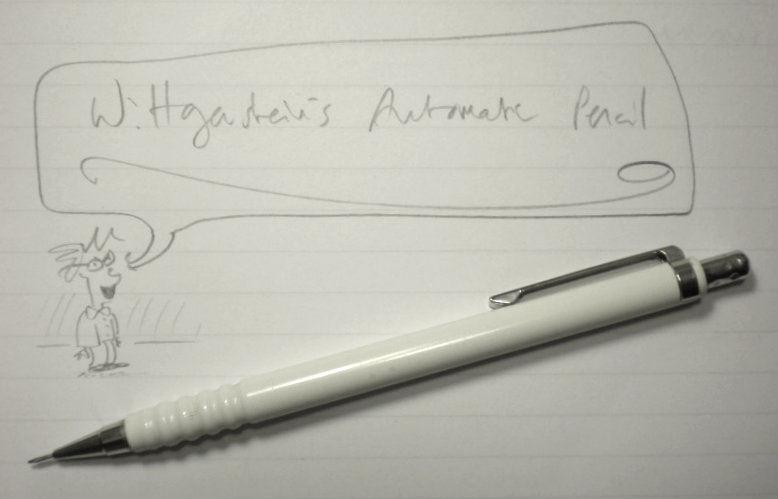A few months ago I bought a manual typewriter. I remember my mother's enormous and frankly horrific electric Adler office machine way back, which shook the dining room with its carriage return - and a small blue manual in a grey hard case with gingham lining that I used to write spy codes on when I was very small... my sister had a Red Fox, a plastic-bodied model from W H Smith. There was nothing majestic or mysterious about typewriters twenty or thirty years ago - there was nothing escapist about them, nothing obscure, nothing recherché, nothing deliberately aimed at removing oneself from the current trends in the technology of writing. They were the current trend, though computers were beginning to appear on the home market and even the humble Sinclair ZX Spectrum pretended to the dizzy heights of professionalism:
Well, we got rid of those machines and I moved on to those all-in-one word-processor/printer units that looked like them, and then on to Windows and Word. Progress? Perhaps.
After a few upgrades, downgrades and side-grades (more on which in a later post), and copious amounts of hand-written drafts, I fancied a change. Internet to the rescue - I snagged an Olivetti Lettera 35 for less than a tenner in excellent condition, loaded with a ribbon, and with its hard carry-case. One trip to Halifax later, and here we are:
It's a nice machine. I have very little to compare except memory, but it's easy to type on, makes all the right noises, and it's very satisfying indeed to pull a full sheet from the roller and lay it to one side, done.
To write this way is an interesting exercise in self-control. Computers encourage an endlessly-rewritable text, one in a constant state of flux, one that is never even drafted so much as evolved in the same place constantly - every piece of work written on the computer is a palimpsest, but one with no inherent superiority over its predecessors. There is no evolutionary evidence when working on a computer - no pile of erroneous cast-offs with which one can judge progress. No map, only a present location.
Typing is different. Typing is ever forwards. There are no erase, undo, copy and paste - no corrective (let alone auto-corrective) behaviour without serious effort (Tipp-ex, anyone?). To type is to engage fully with the act of writing - to type is to make writing. To type is to see where you have been, from start to finish, and to know that whatever you write, it remains embedded in the archaeological srata of the work of its time. To read a typed draft is to trace a journey, not just gaze at a space that may or may not be the desired one.
In this, typing shares something with handwriting. Drafting in pencil or ink is to really forge something that is a kind of embodiment of the person writing it. I have written about this before so will avoid repetition here - but the nature of physical contact with material and the ease of making adjustments, marginalia, and annotations gives writing greater freedom than when merely blackening pixels on a screen.
Even today, some well-known authors use typewriters. To do so makes one not wilfully perverse, nor a neo-Luddite, nor a throwback. To type need not be some faddish retro chic, some quirk of style that has no root cause beyond the desire to appear one way or another. To type, for the best reasons, is to be, simply, a writer - and, simply, to write.
***
Recently the last British typewriter rolled out of the Brother factory - apparently they were selling around 30 per week by the end of 2012. Still a respectable number, I think, given the way computers - desktops, laptops, tablets, smartphones - have swamped our lives and become absolutely normative in so many respects.
BBC News item
BBC News video item
BBC Radio interview with the writer Paul Bailey
And you can still get ribbons...


